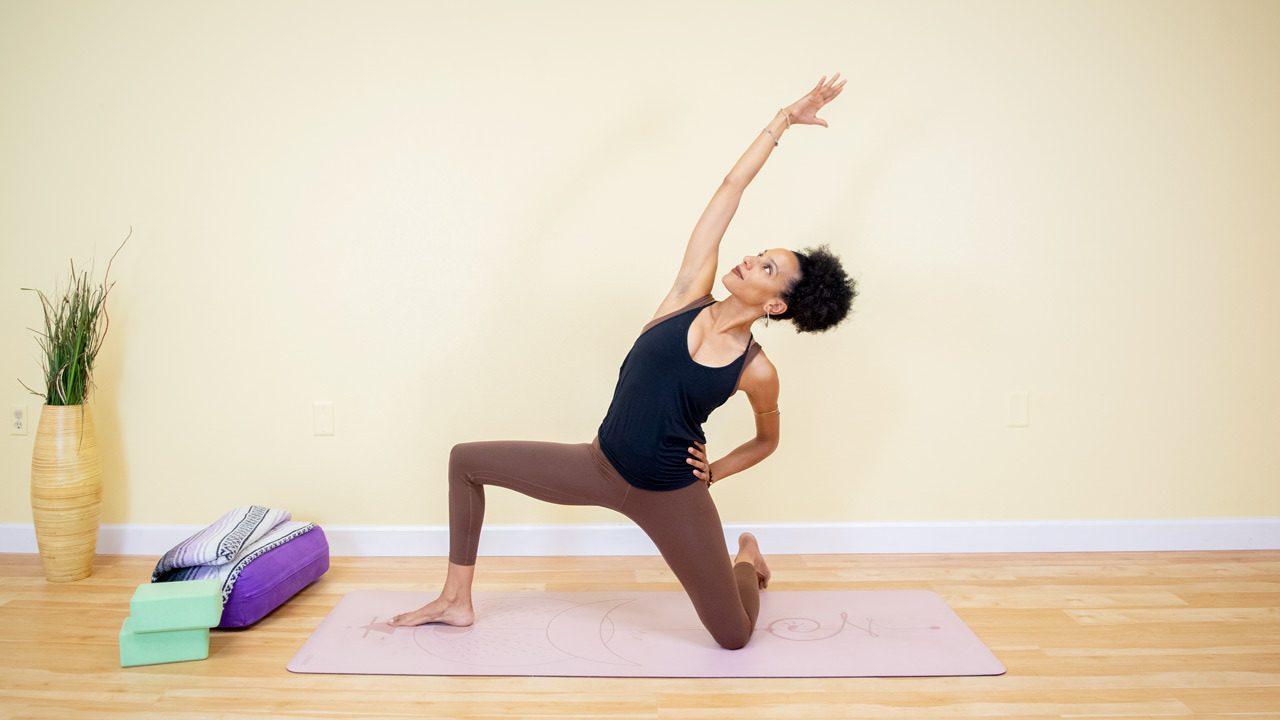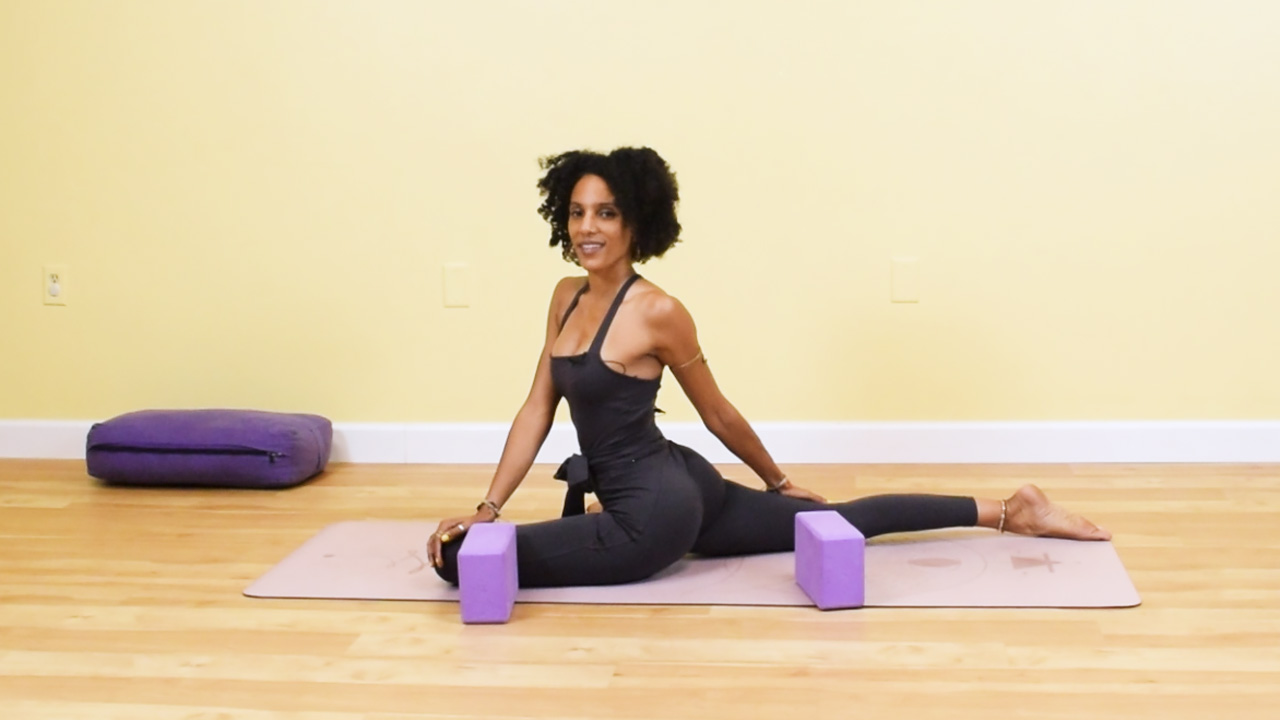If you’re a yoga teacher and have been teaching for a while, it’s likely that you’ve used a range of cues, phrases and instructions in the past that you might think twice about using now. For example, I used to label poses easy, medium, and hard. I thought that made yoga poses accessible, but all it did was create competitiveness and hierarchy. I believe the best teachers are also lifelong students and we can only do better once we know better.
Language matters
Words like ‘accessible’ and ‘inclusive’ have become much more widely used with regards to yoga in recent times. However, I feel that the way that yoga is sometimes taught and presented is, in fact, the opposite: ableist and inaccessible. Fortunately, more yoga teachers and practitioners are beginning to question such ableist and exclusive practices and have shifted toward methods that return to the roots and basics of this holistic practice – i.e. philosophy, pranayama, and meditation that go beyond the practice of asana.
Alongside widening the scope of what we teach, I believe that by examining and adapting the way we teach and the language we use can have a huge impact on who has access to yoga. There are over 30,000 yoga studios in the USA alone. Yet the majority cater to a very specific profile of student; fit, able-bodied, middle-class, white women. As evidence mounts on the benefits of yoga for the body and mind, it is important to return to simple practices that are accessible and can support individuals regardless of their background, gender, social status, body shape, age and so on.
6 do’s and don’ts for accessible yoga classes
I spoke to some practitioners who shared their experiences of feeling ‘othered’ (i.e. excluded / being treated as if they are fundamentally different). Listed below are some of the cues and phrases that elicited this feeling, along with some suggestions of what you could say / do instead.
I invite you to reflect on these and come up with some cues or phrases that you feel might support and empower your students more effectively.
1. “The full expression of the pose”
You may have heard this phrase used by yoga instructors to describe the ‘traditional’ (or most advanced) way to perform a posture. You may hear: “To explore the full expression of Gomukhasana, bind your hands behind your back.”
Using this kind of language suggests that there is an ‘end goal’ to what an asana should look like and contributes to the idea that there is hierarchy in yoga poses. Being able to bind your hands or not behind your back in Cow face pose, has nothing to do with your worth as a human being nor with your experience as a yogi.
Consider building postures in layers instead, by establishing the basics or foundation of the posture and then teaching different variations of the poses so that your students can experience what works for their body.
2. “If you are (more) flexible…”
Eulalia, a Senior Engineer from Barcelona, explains that one of the comments she dislikes the most is, “For those more experienced, flexible people in the room, slide your front leg forward into Hanumanasana …” (or some such other pose…) “Such a comment implies that those who have been practicing for longer will inherently be more flexible, which is untrue,” Eulalia adds.
Flexibility is something one can foster through the consistent practice of asana. But many other factors must be taken into account too – e.g. body shape, musculature, anatomy, etc. Being more flexible does not equate to being more advanced.
3. Not offering options
Christina, a 4-time Paralympic gold medalist who’s been practicing for several years, said that the thing that bothers her most is not what is said, but what is omitted:
“I feel frustrated when it’s assumed that everyone can make the same shapes with their bodies and there is no instruction on how to modify or adapt if you are unable to create a certain pose. Or when there is no alternative action or prop offered.”
Teaching a one-size-fits-all sequence and not offering different options or props is based on the assumption that everyone has the same capabilities instead of meeting each student where they are. When props are offered as an integral part of the practice, students regain confidence and self-government. They are then able to make better choices that support them in different stages of their practice and their life.
Get creative and come up with different variations, with and without props, fostering an environment where students can honour their individual needs and experience the benefits of the practice.
Practice with Laia: Ground floor access
This grounding practice is ideal if you’re looking to remain on the ground! With the use of props to make this practice accessible to most, we will move through poses that will help you feel grounded, relaxed, and present. This class is perfect for those with reduced mobility that can benefit from remaining on the floor, starting with slow movement and followed by a few Yin-style poses.
4. Dismissing students’ autonomy
Jennifer, a fashion designer in the UK who liked to practice hot yoga, shared her experience:
“I went to grab my water bottle because I was nauseous and the instructor scolded me in front of the class. When I tried to leave because I felt awful, he shamed me again and forced me to stay. I pushed through the class but mostly laid down in a puddle of my own sweat. I didn’t go back to yoga for a very long time.”
Forbidding students from taking care of themselves by having water, or leaving a class for whatever reason they see fit, is, in my opinion, violence, and as yoga teachers I feel we should strive to live by Ahimsa, or non-harming. No lineage of yoga should govern a practitioner’s self-autonomy and decision-making.
5. “You look strong enough to do …”
Valerie, a student with an invisible chronic illness and an ostomy bag, reflects on the experience of going to a class and a teacher assuming her level and her ability because of the way she looks: “You look like you’re in good shape and very strong; try shoulder stand!” Valerie, who was a new student, recalls feeling uncomfortable being vocal about her needs or interrupting the class, although she had serious concerns about attempting the shape.
Presuming someone’s ability to get into a yoga asana (or not) because of the way they look, is ableism, and can be harmful to participants. Instead, build connections with the students before and after class. They’ll feel safer sharing with you and you can learn more about how to truly support them.
6. “You should feel X in the pose…”
Removing the emphasis on what someone “should” feel can be a great way to give them back autonomy. Different bodies may experience different sensations in the same shape, and it is important to acknowledge that.
When we tell students what they should or shouldn’t feel in a pose, we may make someone feel inadequate, or as if they are somehow missing out. Imagine we’re in Paschimottanasana (Seated forward fold). I would cue something like: “For more sensation in the hamstrings, extend your legs a little more or flex your feet“. I would also offer: “If you want a more relaxed experience today, keep your knees bent and rest your body on a bolster“. This encourages students to understand that they have options and can tailor poses according to what they wish to experience on any given day.
Choose connection over perfection
Becoming more inclusive and making yoga spaces more accessible isn’t about perfection but about continuing to connect to the communities that we serve, asking questions, and growing together. Making mistakes and sometimes saying the wrong thing is inevitable, yet as teachers and community leaders it is our responsibility to learn, grow, and stay open and humble. Being more inclusive can begin by simply choosing our words well, taking the time to know our students, and creating spaces where everyone can feel like they belong.
I’d love you to share your experiences about how accessible (or not) you’ve found yoga, along with some suggestions of alternatives cues or phrases you find helpful in class.
Learn more
If you’d like to learn more learn more about how to adapt and make your yoga classes, sequences, language and teaching spaces accessible and welcoming for those with different abilities, needs, ages and backgrounds, take a look at Laia’s 5-hour online course, Teaching Accessible and Inclusive Yoga on our Academy.


